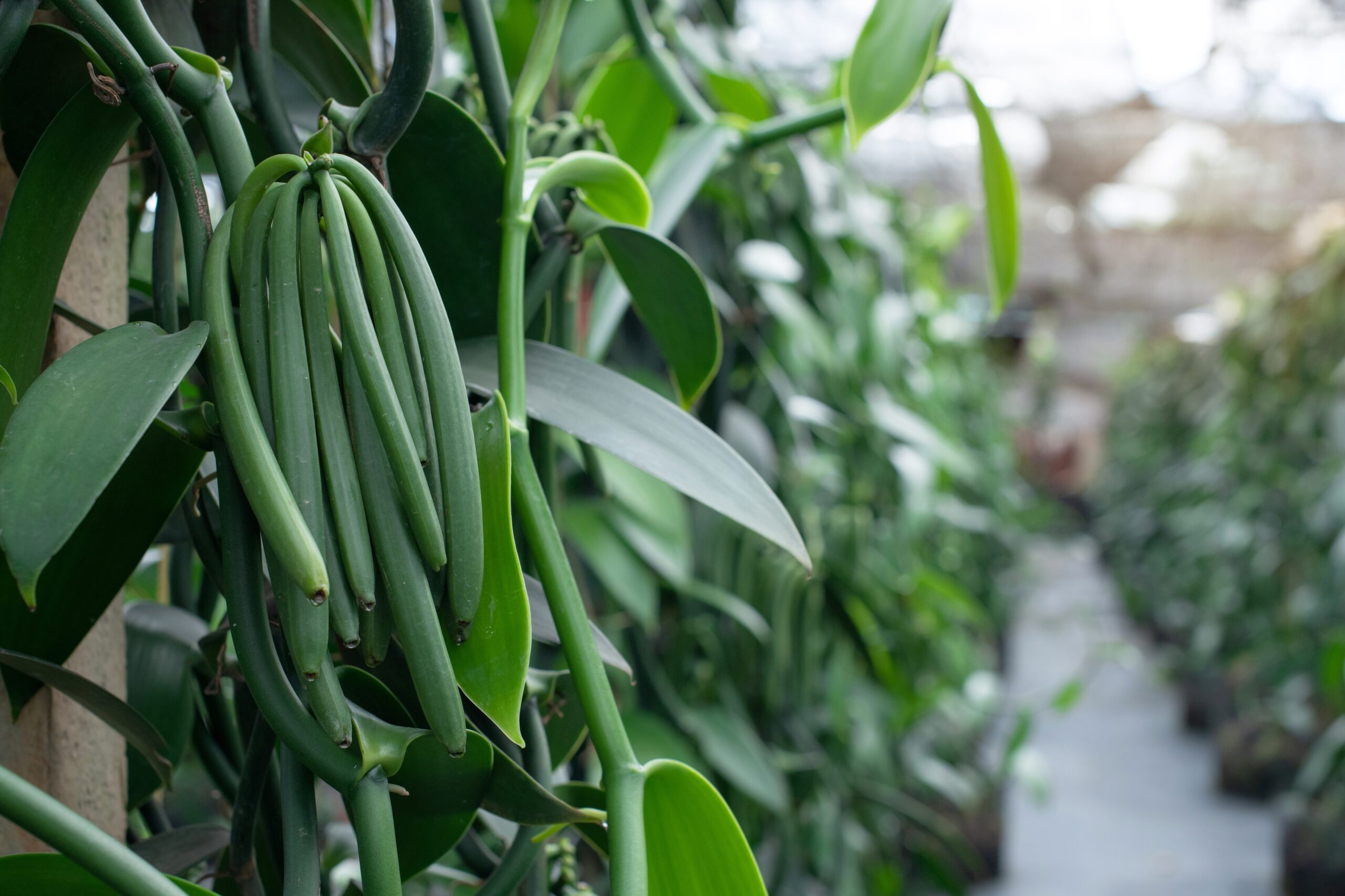Your Vanilla of Choice
Vanilla flavor has endless variations and possibilities. In this article, we explore the vanilla sensory profile from different perspectives – and discuss the ways in which we harness technology to unleash new opportunities.
Located 350 miles east of mainland Africa, the island of Madagascar is the source of approx. 70% of the world’s natural vanilla. Most of Madagascar’s vanilla is grown in a region called “Bourbon”, which received its name from its proximity to Réunion, a small island located east of Madagascar. Réunion used to be called Île Bourbon, and it is where the region’s vanilla farming began, eventually spreading to the larger island of Madagascar.

Madagascar vanilla is the source of the wholesome vanilla flavor we all love so much. This beloved aroma, which is often referred to as Bourbon Vanilla, is derived mainly from the island’s particular climate, soil and curing methods. But despite its dominance, Bourbon Vanilla is not the only beloved vanilla flavor. Far from it. Vanilla has a wide flavor and aroma profile range, depending on where in the world it is grown, harvested and cured. The massive influence of geography and climate on crop development is called the Terrior Effect. This effect plays a central role in the aromatic diversity of wine, coffee – and also vanilla.
Vanilla is a global affair
While we may associate vanilla primarily with Madagascar, vanilla actually originated in Mexico. The vanilla orchid is a Mexican original, and unlike Madagascar vanilla, the Mexican vanilla bean has a gentle nutmeg kick that makes it very easy to identify. Vanilla is very hard to grow since it requires specific climate and soil conditions, and yet it is also cultivated in Uganda, Tahiti and Indonesia. Alongside Madagascar and Mexico, these countries are all situated close to the equator – an absolute must for vanilla traditional farming.
Vanilla tastes and smells different in Mexico precisely due to the fact that the soil and climate conditions are unique – and so are the growing and curing methods. These varying conditions are the reason vanilla from Uganda is subtly sweet and “chocolatey”, vanilla from Indonesia gives off a distinct woody scent & taste, and vanilla from Tahiti – which is derived from a vanilla orchid species named vanilla tahitensis – is adored for its fruitiness and strong hints of cherry and anise.

The aroma profile challenge
How does this information relate to the needs of the food and fragrance industry? We’re glad you asked. When crafting a specific product with a distinct vanilla aroma, the food and fragrance industry must make specific sensory adaptations that comply with their consumers’ taste and scent preferences – which are largely based on cultural attributes. For example, most US-based consumers prefer a sweeter aroma profile, while consumers from France are used to vanilla aroma with hints of smoke. But that’s not all. Different applications such as ice cream, cookies and perfume each require a different aroma profile. Therefore, food and fragrance companies must rely on a supply of natural vanilla from a specific region, as a basis for creating products with impeccable consistency.
But when it comes to vanilla, consistency can be challenging – and the weather is mostly to blame. First of all, climate change greatly impacts the constant delivery of a steady supply of vanilla from a specific region, due to a rise in tropical storms and soil-borne diseases. Secondly, relying on an annual supply of the same vanilla from the same region will result in different aroma profiles throughout the year – due to the changing climate that impacts both growing and curing stages.
To achieve consistency, F&F companies have become accustomed to acquiring vanilla batches from different farmers worldwide. They use the vanilla batches to produce extracts, which are then mixed to create blends that fit specific market segments or applications. These blends combine beans with a variety of sensory profiles to achieve the same aroma, time and time again.

The future of vanilla flavor
At Vanilla Vida, we’re acutely aware of the amazing range of the vanilla aroma profile. Equipped with patented data-driven technology, we set out to bypass region dependent vanilla production (AKA the terroir effect) and to generate a stable supply of raw material with a customized sensory profile. This is nothing short of a revolution.
The controlled curing process allows us to naturally create specific sensory profiles for specific needs – and to replicate them time and time again. There are many process parameters that we can influence during the curing stage. In essence, we target specific components within the harvested vanilla bean, and then increase or decrease their presence in comparison to other components. The effect on aroma is unmistakable and highly accurate.
Our patented aroma navigation technology is based on a deep understanding of vanilla plant metabolism. By applying different curing processes to the same vanilla bean batch, we are able to produce end products with altered sensory profiles. Using advanced analytics and data collection allows us to replicate the same sensory profile even when relying on vanilla bean batches that aren’t similar.
As for aroma customization, we work with companies who know exactly what they want and won’t settle for anything else. Once we understand our clients’ sensory needs, we are able to calculate which aroma molecules should be cultivated for dominance during the curing process – and create custom profiles that fit the bill with maximum precision.
Vanilla Vida’s methods and technologies are another step in the evolution of vanilla cultivation, which began in Mexico hundreds of years ago. We’re proud to be a part of vanilla history, which is rich, complex and bustling with life – just like the flavors we love so much.
